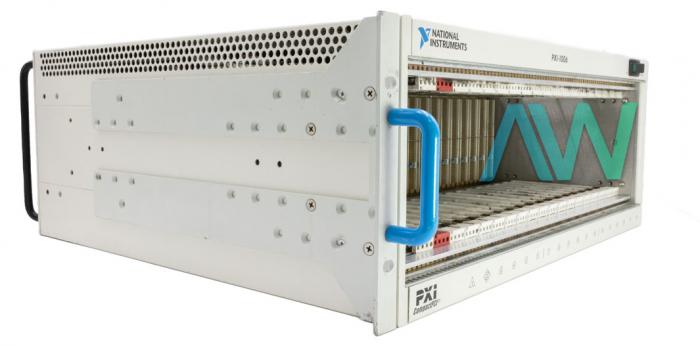In the world of aerospace propulsion, hot-fire testing plays a critical role in ensuring the safety, reliability, and performance of jet and rocket engines. However, developing a real-time data acquisition and control (DAC) system for such testing comes with its own set of challenges. In this blog post, we’ll explore how engineers tackled these obstacles and successfully implemented a state-of-the-art DAC system using National Instruments LabVIEW Real-Time and the NI PXI platform.
Meeting Performance Challenges:
The primary challenge in this project was to develop a system capable of handling a large number of channels, high data rates, and event recognition requirements while maintaining safety and data recording reliability. To overcome these hurdles, the engineers devised a solution that distributed system features to separate components, ensuring aggressive performance targets were met.

LabVIEW Real-Time and PXI Chassis:
The heart of the DAC system consisted of five PXI chassis, each running National Instruments LabVIEW Real-Time. These components were programmed to perform data acquisition and control tasks. By leveraging the power of LabVIEW Real-Time, the engineers achieved reliable and high-performance operation, meeting the demanding requirements of jet and rocket engine testing.
Flexible Test Sequences and Alarm Logic:
One of the key benefits of the DAC system was its ability to generate event-driven, user-defined test sequences. This flexibility allowed for multiple red-line alarm channels for each event, enabling tight multilevel alarms during high-risk activities and more open criteria during low-risk phases. As a result, falsely aborted tests were reduced, leading to increased facility throughput.

Relational Database and Configuration Traceability:
To ensure accurate test data and facilitate traceability, a relational database was incorporated into the DAC system. This database stored transducer and test configuration information, increasing the value of test data and reducing the need for retests. The engineers gained more confidence in measurements, thanks to the ability to associate metadata with the raw values.
Data acquisition was performed via eight separate modules. Four of these were PXI-4472 modules, which acquired data at 32 KHz from sensors in the DAQ A chassis. These modules utilized the NI PXI-6653 as a timebase clock source using the star trigger lines. The DAQ B chassis controller used three PXI-6250 modules that imported the timebase from DAQ A. The final device used was a PXI-6651.
System Design and Implementation:
The DAC system was implemented using a combination of PXI controllers, data acquisition modules, reflective memory cards, and LabVIEW Real-Time drivers. Data acquisition was performed at high sampling rates, and the acquired data was synchronized and transferred between controllers. The master controller processed the input data, evaluated control sequences and alarms, and determined the output state for devices. A real-time logger system recorded and streamed data, while a watchdog system ensured system reliability and safety.
User Interface and Data Analysis:
The DAC system’s graphical user interface (GUI) provided engineers with intuitive control over test configuration, sequence specification, real-time data display, and post-test review. Data files were saved in the DIAdem TDM format, allowing for metadata attachment and facilitating both quick-look reports and in-depth data analysis using NI DIAdem.

Achieving High Performance Within Budget:
By leveraging LabVIEW Real-Time and the NI PXI platform, the engineers successfully developed a high-performance DAC system that met industry standards while operating within a moderate budget. The comprehensive LabVIEW development experience, combined with additional tools and support, allowed for efficient software development and effective maintenance.
Conclusion:
Developing a real-time DAC system for jet and rocket engine hot-fire testing is a complex endeavor. However, with the right tools, such as LabVIEW Real-Time and the NI PXI platform, engineers can overcome performance challenges and achieve a flexible, reliable, and cost-effective solution. The success of this project serves as a testament to the power of advanced engineering tools and methodologies in the field of aerospace propulsion testing. As a result, LabVIEW Real-Time will remain a go-to choice for deterministic control system development.
The case study referenced in this post was originally published in 2006 and was co-authored by Douglas G. Anderson, Ana Cool, David Hoadley, Jeffery Siegel, and Chungwen Chen.







